True science.
To know for sure, you have to measure it for yourself. Without bias or preconceptions, our studies analyze data we gather ourselves through specific tests, providing information we share
publicly and transparently, explained by experts on the subjects.
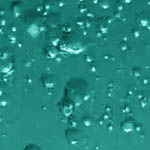 Seawater is denser than both fresh water and pure water due to dissolved salts that increase the mass proportionally. Seawater pH is typically between 7.5 and 8.4, with more dissolved ions than freshwater. Aerobic and anaerobic bacteria are found at all depths in the water column, as well as in the seafloor sediments. Our studies analyze samples to detect chemical, radiation and microplastics contamination. (Seawater pH Map)
Seawater is denser than both fresh water and pure water due to dissolved salts that increase the mass proportionally. Seawater pH is typically between 7.5 and 8.4, with more dissolved ions than freshwater. Aerobic and anaerobic bacteria are found at all depths in the water column, as well as in the seafloor sediments. Our studies analyze samples to detect chemical, radiation and microplastics contamination. (Seawater pH Map)
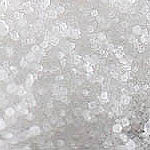 Most packaged and canned food products contain sea salt, which is produced by the evaporation of seawater.
On average, seawater in the world's oceans has a salinity of about 3.5%. This means that a liter of seawater has about 35 grams (1.2 oz) of dissolved salts — sodium and chloride ions. Commercially available sea salts on the market today vary widely in their chemical composition.
Most packaged and canned food products contain sea salt, which is produced by the evaporation of seawater.
On average, seawater in the world's oceans has a salinity of about 3.5%. This means that a liter of seawater has about 35 grams (1.2 oz) of dissolved salts — sodium and chloride ions. Commercially available sea salts on the market today vary widely in their chemical composition.
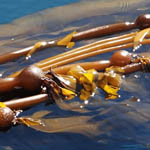 There are about 30 different kinds of sea kelp— large brown algae seaweeds that make up the order Laminariales. Despite its appearance, kelp is not a plant since it is not made of more than one clearly differentiated tissue.
Kelp grows in shallow parts of the ocean, and are known for their high growth rate; the genera Macrocystis and Nereocystis can grow as fast as 14 inches a day, ultimately reaching 100 to 260 ft.
There are about 30 different kinds of sea kelp— large brown algae seaweeds that make up the order Laminariales. Despite its appearance, kelp is not a plant since it is not made of more than one clearly differentiated tissue.
Kelp grows in shallow parts of the ocean, and are known for their high growth rate; the genera Macrocystis and Nereocystis can grow as fast as 14 inches a day, ultimately reaching 100 to 260 ft.
Test data coming soon.
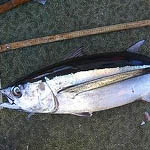 Also as the longfin tuna, albacore is a species of fish of the order Perciformes. There are six distinct stocks known globally in the Atlantic, Pacific, and Indian oceans, as well as the Mediterranean Sea. They are unique among most tuna in that their primary food source is cephalopods, with fish making up a much smaller portion of their diet.
Also as the longfin tuna, albacore is a species of fish of the order Perciformes. There are six distinct stocks known globally in the Atlantic, Pacific, and Indian oceans, as well as the Mediterranean Sea. They are unique among most tuna in that their primary food source is cephalopods, with fish making up a much smaller portion of their diet.
Test data coming soon.
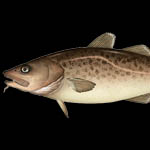 Cod is used as part of the common name for a number of other fish species, the two most common being the Atlantic Cod and the Pacific Cod.
Also known as gray cod or grayfish, Pacific Cod are a bottom-dwelling species that populate much of the northern Pacific continental shelf and upper slopes.
Cod is used as part of the common name for a number of other fish species, the two most common being the Atlantic Cod and the Pacific Cod.
Also known as gray cod or grayfish, Pacific Cod are a bottom-dwelling species that populate much of the northern Pacific continental shelf and upper slopes.
Test data coming soon.
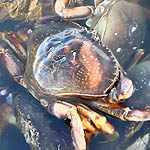 The Dungeness crab is species inhabiting eelgrass beds and water bottoms all along the west coast of North America,
and Dungeness are considered a delicacy in the United States and Canada.
A genetic analysis of adult Dungeness crabs indicated that there is one population across the California Current System.
The Dungeness crab is species inhabiting eelgrass beds and water bottoms all along the west coast of North America,
and Dungeness are considered a delicacy in the United States and Canada.
A genetic analysis of adult Dungeness crabs indicated that there is one population across the California Current System.
Test data coming soon.
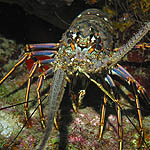 The California spiny lobsters are found in the eastern Pacific Ocean from Monterey Bay to the Gulf of Tehuantepec, Mexico. They typically grow to about 12 inches long, but can be much larger. They're a reddish-brown color with stripes along the legs and a pair of enlarged antennae. California lobsters are clawless.
The California spiny lobsters are found in the eastern Pacific Ocean from Monterey Bay to the Gulf of Tehuantepec, Mexico. They typically grow to about 12 inches long, but can be much larger. They're a reddish-brown color with stripes along the legs and a pair of enlarged antennae. California lobsters are clawless.
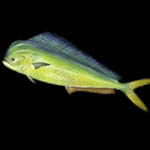 The mahi-mahi (Hawaiian, "very strong") or common dolphinfish is a surface-dwelling ray-finned fish found in off-shore temperate, tropical, and subtropical waters worldwide. Also widely called dorado, these fish are most commonly found in the waters around the Gulf of Mexico, Costa Rica, Hawaii and the Indian Ocean.
Sport fishermen seek them due to their beauty, size, food quality, and healthy population. The mahi-mahi is also a common vector for ciguatera poisoning caused by the accumulation of toxins.
The mahi-mahi (Hawaiian, "very strong") or common dolphinfish is a surface-dwelling ray-finned fish found in off-shore temperate, tropical, and subtropical waters worldwide. Also widely called dorado, these fish are most commonly found in the waters around the Gulf of Mexico, Costa Rica, Hawaii and the Indian Ocean.
Sport fishermen seek them due to their beauty, size, food quality, and healthy population. The mahi-mahi is also a common vector for ciguatera poisoning caused by the accumulation of toxins.
Test data coming soon.
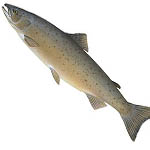 Salmon is the common name for several species of ray-finned fish in the family Salmonidae.
The family Salmonidae contains the Pacific salmon and Pacific trout.
The six Pacific salmons of Oncorhynchus are anadromous (migratory) and semelparous (die after spawning. Salmon are anadromous: they hatch in fresh water, migrate to the ocean, then return to fresh water to reproduce.
Declines in the abundance of wild salmon due to overfishing has placed greater pressure on hatcheries to
increase production and restore the wild salmon stock to supply fisheries.
In 2020, researchers reported that widespread declines in Pacific salmon size resulted in substantial ecological and economic losses.
Salmon is the common name for several species of ray-finned fish in the family Salmonidae.
The family Salmonidae contains the Pacific salmon and Pacific trout.
The six Pacific salmons of Oncorhynchus are anadromous (migratory) and semelparous (die after spawning. Salmon are anadromous: they hatch in fresh water, migrate to the ocean, then return to fresh water to reproduce.
Declines in the abundance of wild salmon due to overfishing has placed greater pressure on hatcheries to
increase production and restore the wild salmon stock to supply fisheries.
In 2020, researchers reported that widespread declines in Pacific salmon size resulted in substantial ecological and economic losses.
Test data coming soon.
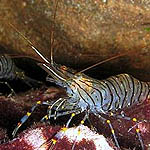 Shrimp are decapod crustaceans with elongated bodies.
A broader definition includes prawns: stalk-eyed swimming crustaceans with long, narrow muscular tails (abdomens), long whiskers (antennae), and slender legs.
Shrimp are widespread and abundant in the ocean, with thousands of species adapted to a wide range of habitats. About 20 species are commercially significant.
California Spot Prawns live in California coastal waters in sandy areas with strong tidal currents at 10 to 100 fathoms.
Shrimp are decapod crustaceans with elongated bodies.
A broader definition includes prawns: stalk-eyed swimming crustaceans with long, narrow muscular tails (abdomens), long whiskers (antennae), and slender legs.
Shrimp are widespread and abundant in the ocean, with thousands of species adapted to a wide range of habitats. About 20 species are commercially significant.
California Spot Prawns live in California coastal waters in sandy areas with strong tidal currents at 10 to 100 fathoms.